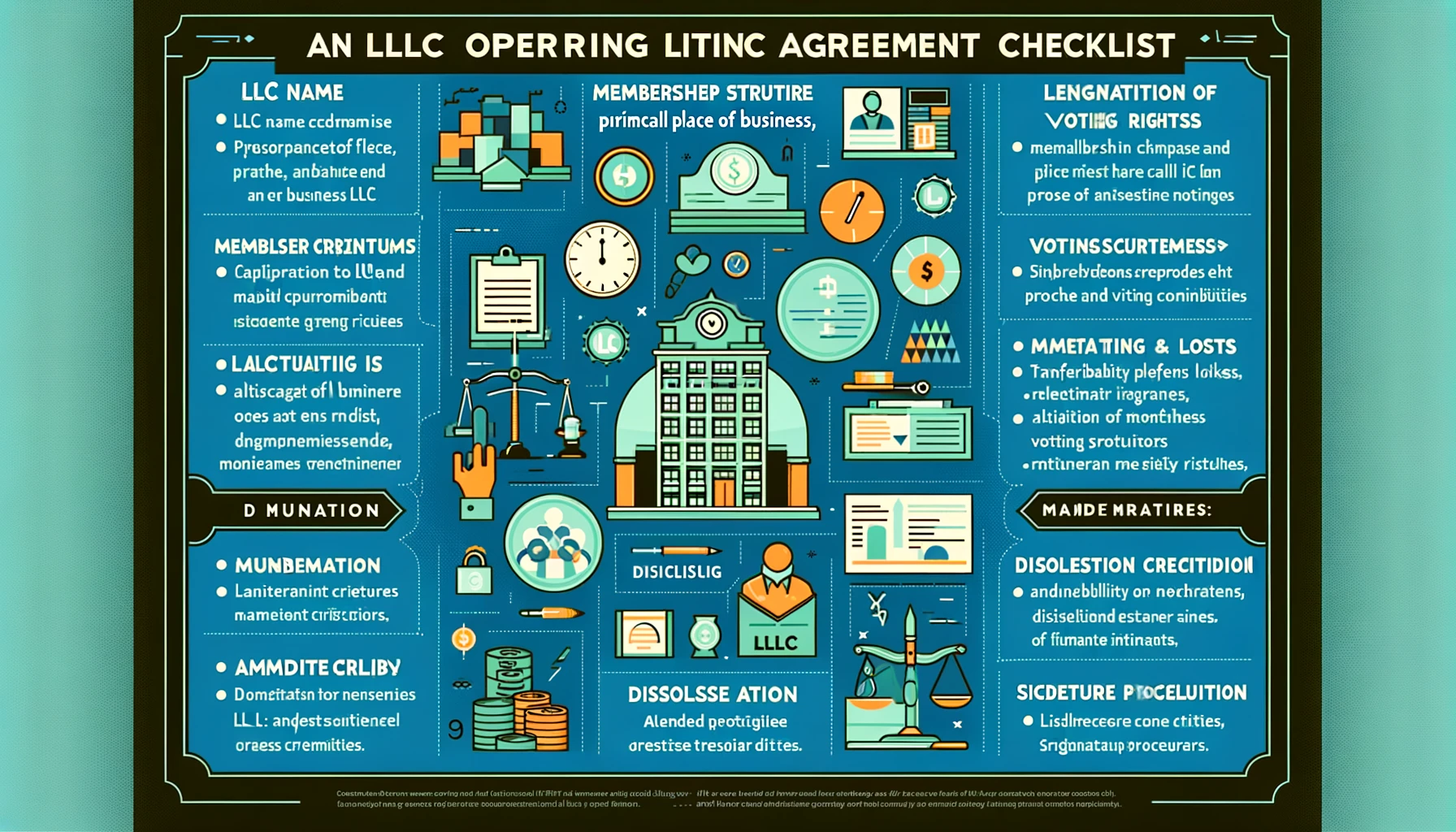The Ultimate LLC Operating Agreement Checklist: Ensuring Your Business's Success
An LLC Operating Agreement serves as the foundation of your business's legal structure, outlining the rights, responsibilities, and relationships of the members involved. While not mandatory in all states, a well-crafted Operating Agreement is critical for protecting your business's interests and ensuring operational clarity. This guide provides a thorough checklist for entrepreneurs and business owners looking to draft or update their LLC Operating Agreements, supplemented with reliable resources.

Introduction
Establishing a Limited Liability Company (LLC) combines the flexibility of a partnership with the liability protection of a corporation. The Operating Agreement, while often overlooked, plays a pivotal role in defining how the LLC operates and is perceived legally. Without a comprehensive agreement, your LLC may be subject to generic state laws that may not align with your business's unique needs.
The Importance of a Detailed LLC Operating Agreement
An LLC Operating Agreement clarifies how financial and operational decisions will be made, reducing the potential for conflicts among members. It provides a clear framework for the business's operations, governance, and member expectations. Additionally, it reinforces the limited liability status by showing that the LLC operates as a separate business entity.
For more information on the significance of LLC Operating Agreements, visit the U.S. Small Business Administration (SBA) website.
Essential Components of an LLC Operating Agreement: A Checklist
1. LLC Name and Principal Place of Business
Confirm the LLC's legal name is consistent with state requirements and list the primary business location. Reference the Secretary of State's website for name registration guidelines.
2. Duration of the LLC
Specify whether your LLC has a fixed duration or will operate indefinitely. This clarifies the entity's lifespan for legal and operational purposes.
3. Purpose of the LLC
Clearly define the business's purpose, ensuring it is broad enough to encompass all intended activities without being too restrictive. This section is crucial for legal clarity and operational direction.
4. Membership Structure and Capital Contributions
Detail the members, their ownership percentages, initial contributions (cash, property, services), and any future contribution requirements. This establishes the financial foundation of the LLC.
For guidelines on membership contributions and structures, the Internal Revenue Service (IRS) provides valuable tax-related information.
5. Management and Voting Rights
Indicate whether the LLC will be member-managed or manager-managed and outline the voting rights and procedures. This determines how decisions are made within the LLC.
6. Allocation of Profits and Losses
Describe how the LLC's profits and losses will be distributed among members. This is typically in proportion to ownership percentages but can vary based on the agreement.
7. Member Roles and Responsibilities
Assign specific roles, responsibilities, and any employment terms for members actively involved in the business's operation. This helps prevent disputes and clarifies expectations.
8. Meeting and Voting Procedures
Establish regular meeting schedules, voting protocols, and quorum requirements. This ensures effective governance and decision-making within the LLC.
9. Transferability of Membership Interests
Set forth conditions under which membership interests can be transferred or sold. This protects the LLC's continuity and the members' interests.
For more information on transfer restrictions and rights of first refusal, consult Legal Information Institute at Cornell Law School.
10. Dissolution Criteria
Define the conditions and procedures for dissolving the LLC, including asset distribution. This prepares the LLC for potential future transitions or closures.
11. Amendment Procedures
Specify how the Operating Agreement can be amended, ensuring the process is clear and agreed upon by all members.
12. Dispute Resolution
Outline methods for resolving disputes among members, preferring mediation or arbitration to avoid court litigation.
13. Signatures
Ensure all members sign the Operating Agreement, solidifying their acknowledgment and consent to its terms.

Create & Review Your Contracts 10x Quality and Ease
Lawyer-level AI handles all your contract needs, with real lawyers providing safeguarding support

Legal and Tax Considerations
Crafting an LLC Operating Agreement involves significant legal and tax considerations. It's essential to consult with legal and tax professionals familiar with your state's laws and the specific needs of your business. Additionally, resources like the American Bar Association can offer guidance and referrals.
Conclusion
A meticulously drafted LLC Operating Agreement is instrumental in safeguarding your business's interests, defining member roles, and ensuring operational efficiency. By adhering to the comprehensive checklist provided, you can create a solid legal foundation for your LLC. Remember, this agreement should be reviewed and updated as your business evolves. Consulting with professionals and leveraging authoritative .gov, .edu, and Wikipedia resources will further enhance the credibility and effectiveness of your LLC Operating Agreement.

